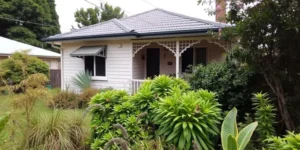Many people find it challenging to decide between renting or buying a house. In Australia, rent and buy house schemes are gaining popularity. This guide will help you explore your options for renting, buying, or renting to buy a home.
We’ll examine the options for renting and buying houses.
Key Takeaways
- Renting gives you flexibility but no equity. Buying builds wealth but needs big upfront costs.
- Rent-to-buy lets you live in a home before buying it. You pay higher rent and an extra fee.
- A $450,000 home might cost $543,600 in a rent-to-buy deal over 2-5 years.
- First Home Owners Grant can help with rent-to-buy plans.
- Moving from renting to owning needs careful planning. Check your finances and get legal help.
Renting a House

Renting a house gives you a place to live without buying it. You pay the owner each month to stay there. It’s a good choice if you can’t buy a house yet. Rental costs are going up in Australia.
This makes it hard for some people to find homes they can afford.
You need to sign a lease when you rent. This paper says how long you can stay and how much you’ll pay. It also lists the rules you must follow. Make sure you read it well before you sign.
Renting lets you move easily if you need to change jobs or areas.
Buying a House
Buying a house is a big step. It gives you a place to call your own. You can paint the walls and make changes as you like. No landlord can tell you to move out. Over time, your house may go up in value.
This can help you build wealth.
Owning a home has money perks too. As you pay off your loan, you own more of your house. This is called building equity. When you retire, a paid-off home is a great asset. You won’t have to pay rent in your golden years.
Plus, if you need cash, you can sell your house or get a loan against it.
Rent-to-Buy: How It Works
Buying a house can be tough. Rent-to-buy offers a new way to own a home. This plan lets you rent first, then buy later.
Rent-to-buy works like this: You sign a lease for 2 to 5 years. Your rent is higher than normal. You also pay an extra fee for the chance to buy. When the lease ends, you can buy the house.
The extra money you paid comes off the price. You don’t need a big deposit up front. Some people use the First Home Owners Grant to start. This plan helps if you can’t get a bank loan right away.
But be careful – you pay more each month than just renting.
Pros and Cons of Renting
Rent-to-buy plans offer a path to home ownership. Renting also has its own set of pros and cons.
Pros of Renting:
- Flexibility: You can move easily when your lease ends.
- Lower upfront costs: No need for a big house deposit.
- No maintenance worries: Your landlord fixes most issues.
- Fixed monthly costs: Rent stays the same during your lease.
- Try before you buy: Test different areas without long-term commitment.
Cons of Renting:
- No equity: Your rent doesn’t build wealth in property.
- Limited control: You can’t change the property without approval.
- Rent hikes: Landlords may raise rent after your lease ends.
- Lack of stability: You might have to move if the owner sells.
- Pet restrictions: Many rentals don’t allow pets.
- No tax benefits: You miss out on homeowner tax breaks.
Pros and Cons of Buying
Buying a house has good and bad points. Here’s a list of pros and cons to think about:
Pros:
- Build wealth: Your home can grow in value over time.
- Freedom: You can change your home as you like.
- Fixed costs: Your mortgage stays the same each month.
- Tax breaks: You may pay less tax as a homeowner.
- Pride: Owning a home can make you feel good.
Cons:
- Big costs: You need a lot of money to buy a house.
- Extra fees: You pay for repairs, taxes, and insurance.
- Less flexible: It’s harder to move if you own a home.
- Market risks: Your home’s value might go down.
- Time: You spend more time on home care and upkeep.
Additional Insights on Rent-to-Buy
Rent-to-buy offers a unique path to home ownership. Read on to learn more about this option’s potential benefits and risks.
Potential benefits
Rent-to-buy offers many perks. You can live in your future home now. The price is set early, so you can plan better. Some deals let you start paying the mortgage right away. This helps your money grow faster.
Living in the house first is great. You can see if you like it before you buy. It’s a good way to test the area and neighbours. You might find hidden issues too. Next, we’ll look at some downsides of rent-to-buy.
Potential downfalls
Rent-to-buy deals can have risks. The house value might drop below the agreed price. You could pay more than the home is worth. Also, you might have to fix things that break. This can cost a lot of money.
You don’t own the house until you make the last payment. If you miss payments, you could lose the house and all the money you paid.
Let’s look at the costs. Over three years, you might pay $109,200 in rent. The total cost to buy the house could be $543,600. That’s a big jump in price. Make sure you can afford it before you sign up.
It’s smart to talk to a expert first. They can help you see if rent-to-buy is right for you.
Comparison Table: Renting vs. Buying vs. Rent-to-Buy
Comparing renting, buying, and rent-to-buy options helps in making informed housing decisions. Here’s a quick look at the key differences:
| Feature | Renting | Buying | Rent-to-Buy |
|---|---|---|---|
| Initial Cost | Low (bond + rent) | High (deposit + fees) | Medium (option fee + rent) |
| Monthly Payments | Rent only | Mortgage + bills | Higher rent + option fee |
| Ownership | No | Yes | After final payment |
| Maintenance Costs | Landlord’s duty | Owner’s duty | Varies by agreement |
| Flexibility to Move | High | Low | Medium |
| Long-term Costs | Ongoing rent | Build equity | Higher total cost |
| Typical Duration | 6-12 months | 15-30 years | 2-5 years |
Rent-to-buy schemes often cost more. For a $450,000 home, the total cost might reach $543,600. These deals last 2 to 5 years. Buyers need finance approval, even in rent-to-buy plans. The property stays with the seller until the last payment. Homeowners gain from rising property values over time. Rent-to-buy rents are higher due to option fees, usually 1–5% of the price.
Steps to Transition from Renting to Owning
Moving from renting to owning a home is a big step. Here’s a guide to help you make the switch:
- Check your finances
- Look at your savings for a deposit
- Think about upfront costs like stamp duty
- Work out your debt-to-income ratio
- Figure out what you can afford
- Use online repayment calculators
- Talk to a bank about home loans
- Look into help from the government
- Check for first-home buyer grants
- See if you can get stamp duty discounts
- Get your home loan sorted
- Choose between fixed and variable rates
- Get pre-approval before you start looking
- Start house hunting
- Make a list of what you need in a home
- Look at houses that fit your budget
- Make an offer on a house
- Decide on a fair price
- Talk about any conditions with the seller
- Get legal help
- Hire a lawyer to check the paperwork
- Make sure everything is in order
- Finish the purchase
- Do a final walk-through of the house
- Pay the money and get the keys
- Move in and set up
- Switch utilities to your name
- Make your new house feel like home
Understanding Rent-to-Buy Schemes: Pros and Cons
Rent-to-buy schemes are an alternative pathway for aspiring homeowners to get onto the property ladder without the immediate need for a large deposit. At RentAndBuyHomes.com, we aim to make homeownership more accessible, particularly for those struggling with traditional financing options. This article breaks down how rent-to-buy schemes work, the benefits, and the potential challenges to help you decide if it’s the right fit for your dream home journey.
What Is a Rent-to-Buy Scheme?
A rent-to-buy scheme is a rental agreement that gives the renter the option to purchase the home at the end of the rental period. During the lease, part of the weekly rent is typically allocated towards the purchase price, helping build equity in the property.
How Do Rent-to-Own Schemes Work?
In a rent-to-own scheme, you agree to a set purchase price for the property at the start of the contract. You pay your rent, with a portion of the payment contributing towards the purchase of the home. At the end of a lease, you have the option to buy the property outright or walk away, depending on your circumstances.
Providers in Australia
Providers in Australia offer various terms and conditions for rent-to-buy schemes. Each agreement differs, so it’s crucial to understand your obligations, including fees, living costs, and what happens if you decide not to proceed with the purchase.
Is a Rent-to-Own Home Right for You?
A rent-to-own home is ideal for those who:
- Aspire to buy a home but are still saving for a deposit.
- Have bad credit or financial situations preventing them from securing a traditional mortgage.
- Want to secure a future sale price before house prices increase.
However, it’s important to seek independent legal and financial advice to ensure the scheme aligns with your financial situation.
Pros of Rent-to-Buy Schemes
| Benefit | Description |
|---|---|
| Lower Deposit | A small deposit is required compared to traditional home loans. |
| Fixed Purchase Price | The sale price is agreed upon upfront, offering predictability. |
| Equity Building | Part of the weekly rent goes towards the purchase price. |
| Time to Save | Allows time to save for a deposit or improve your financial situation. |
Cons of Rent-to-Buy Schemes
| Challenge | Description |
|---|---|
| Financial Risk | If the housing market drops, the property may be worth less. |
| Commitment | Walking away could mean losing the fee for the option to purchase. |
| Higher Costs | You may need to pay your rent at above-market rates to build equity. |
What Happens If Something Goes Wrong?
If something goes wrong, such as a market downturn or financial hardship, it’s vital to know your options. Agreements should include a clause explaining what happens if you cannot proceed with the purchase. Seek independent legal and financial advice to protect your interests.
How Does It Compare to Traditional Mortgages?
While a rent-to-buy scheme may suit those unable to access a traditional home loan, it’s important to remember that you’ll still need to apply for a home loan at the end of the lease if you wish to purchase the home.
The Role of Rent-to-Buy Providers
A reliable rent-to-buy provider ensures transparency, fairness, and support throughout the lease term. At RentAndBuyHomes.com, we help homebuyers understand every step of their agreement, providing guidance tailored to their financial situation.
Key Considerations for Rent-to-Buy Schemes
- Understand the terms and conditions and consult a solicitor before committing.
- Make sure the purchase price reflects the current and projected value of the property.
- Plan your finances to ensure you can proceed at the end of the rental period.
Key Takeaways
- Rent-to-own offers a flexible way to buy your own home without needing a large upfront deposit.
- It’s essential to understand your financial commitments and seek independent advice.
- Contact RentAndBuyHomes.com to learn more about how our schemes can help you achieve homeownership.
Take the first step towards your dream home today!
Conclusion
Choosing to rent, buy, or rent-to-buy a home is a big step. Learn more about your options to make the best choice for your future.
Further Reading: Rent and Buy House: Your Guide to Renting, Buying, or Renting to Buy
Want to learn more about renting and buying homes? Check out our guide! It covers all you need to know about renting, buying, and rent-to-buy options. You’ll find tips on how to move from renting to owning a home.
The guide also talks about government programs that can help you buy a house. It’s a great read for anyone thinking about their next home move.
Our guide digs into the pros and cons of each choice. It looks at things like the Queensland Government’s Sales to Tenants program. This lets public housing tenants buy the home they rent.
The guide also talks about how owning a home can help you save for when you retire. If you’re not sure what’s best for you, this guide can help you decide.
For more detailed insights, please refer to our comprehensive guide on renting, buying, or renting to buy a house.
FAQs
1. What’s the difference between renting and buying a house?
Renting means you pay to live in someone else’s place. Buying means you own the home. Renting is often cheaper at first, but buying can save money over time.
2. How does rent-to-buy work?
Rent-to-buy lets you rent a home with the option to buy it later. You pay rent and extra money each month. This extra cash goes towards buying the house if you decide to.
3. What should I think about before renting a house?
Look at the rent cost, bond amount, and lease length. Check the house condition and location. Make sure you can afford all costs, including bills.
4. Is buying a house a good idea?
Buying can be smart if you plan to stay in one place for a long time. It builds wealth and gives you control over your home. But it costs more upfront and needs more care.





